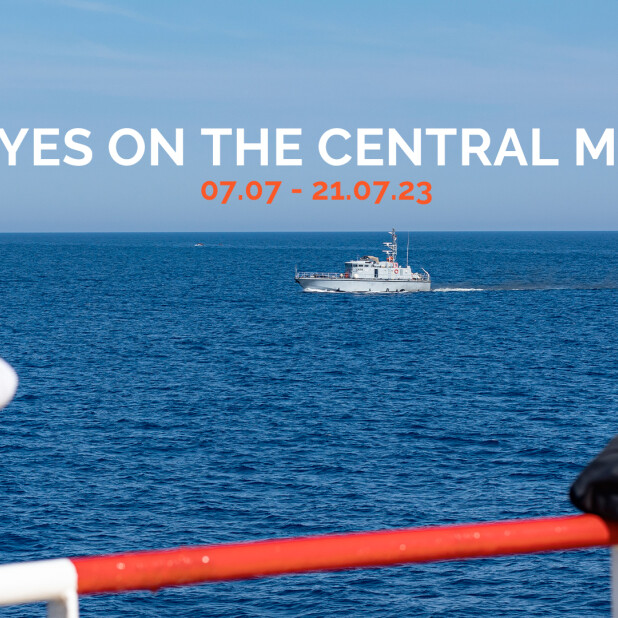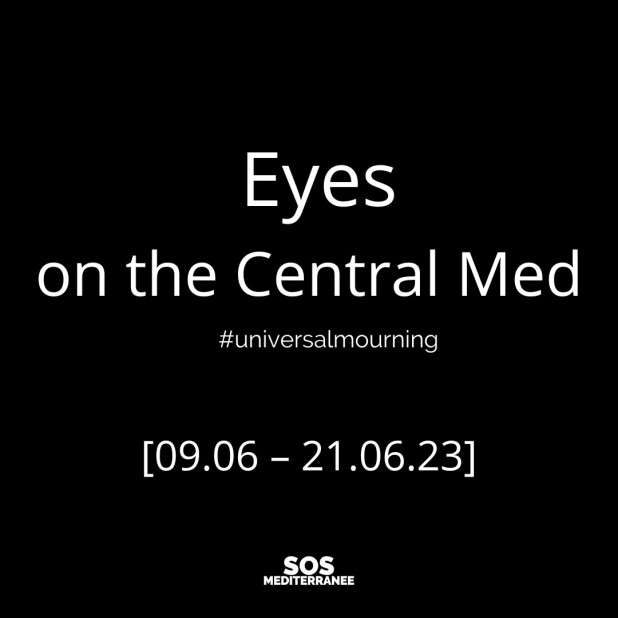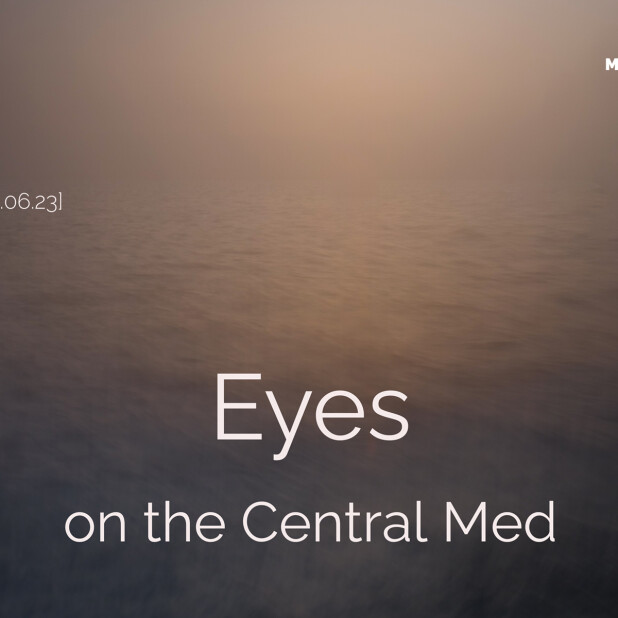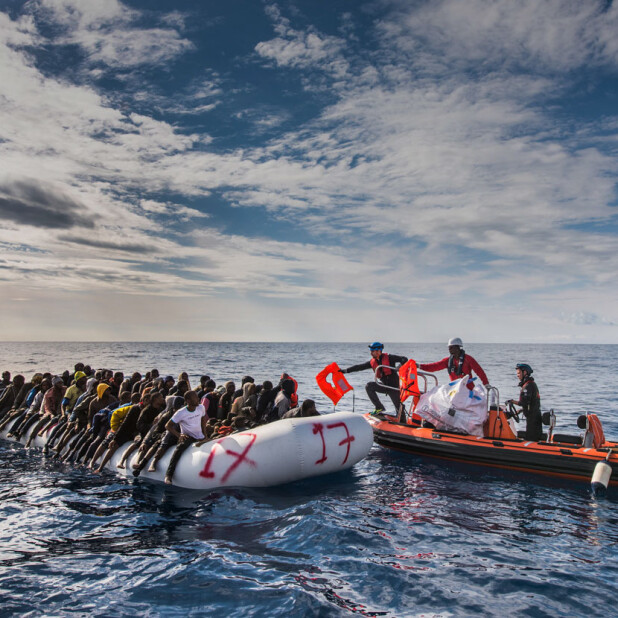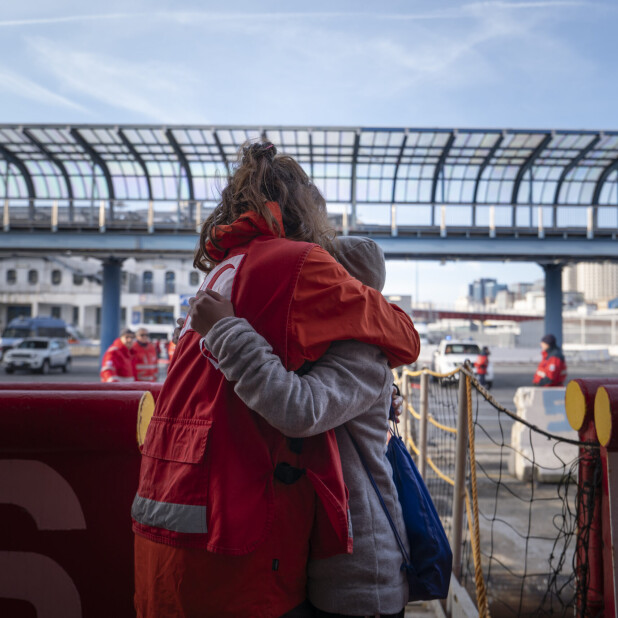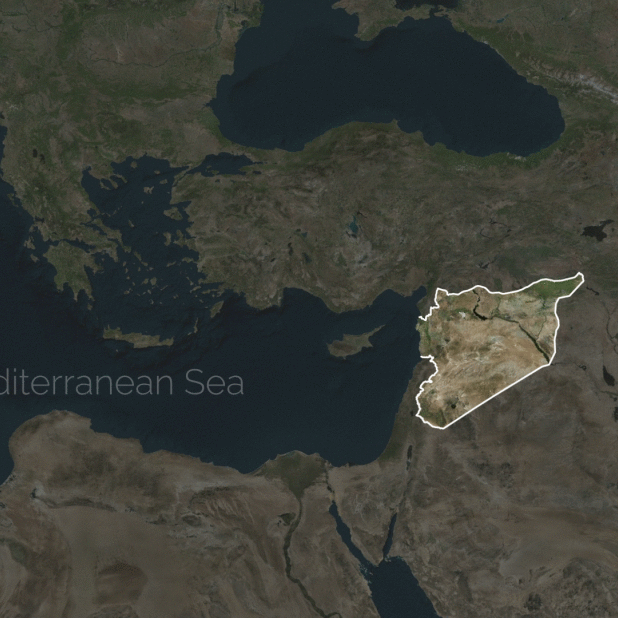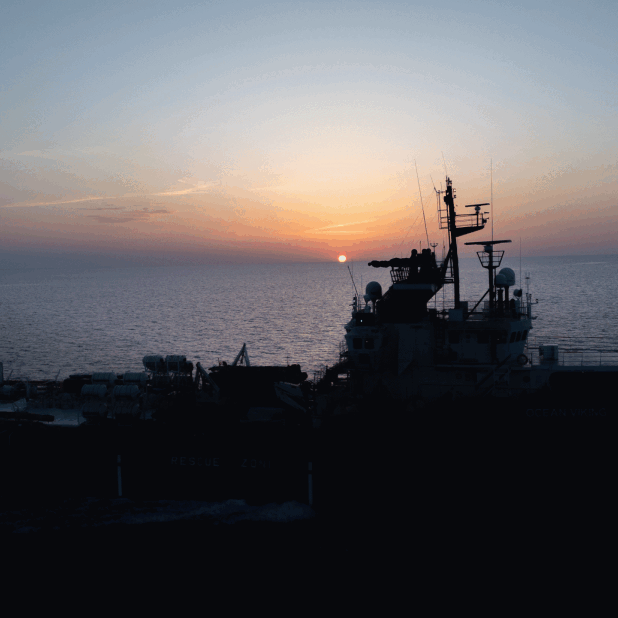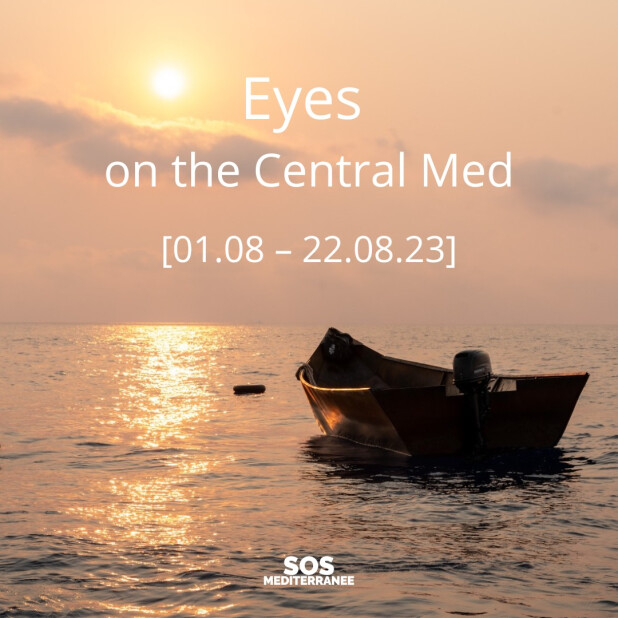
[27.04 – 17.05.23] The following publication by SOS MEDITERRANEE intends to shed light on events which unfolded in the central Mediterranean in the past weeks. It is not intended to be exhaustive, but rather to provide a general update on maritime search-and-rescue-related matters occurring in the area we have been operating in since 2016, based on public reports by different NGOs, international organisations and the international press.
First coordination of operations by maritime authorities in years amidst breach of international maritime law
On April 27, Ocean Viking of the NGO SOS MEDITERRANEE rescued 15 people from a fiberglass boat in the Maltese Search and Rescue Region (SRR). The day after, Ocean Viking performed three more rescues in the Maltese SRR in 7 hours, all closely coordinated by the Italian Maritime Rescue Coordination Center (MRCC). The distant port of Civitavecchia was assigned as a place of safety for the 168 survivors onboard who could eventually disembark on May 2 after four days of navigation.
While such coordination efforts performed by the Italian MRCC are vital and long due in the central Mediterranean, on April 29, according to Grimstad merchant Vessel crew, the same authorities MRCC ordered the merchant vessel Grimstad, which rescued approximately 30 people in distress, to return the survivors to Libyan which is against international maritime law.
On April 29, Life Support of the NGO Emergency rescued 35 people who spent four days at sea before the intervention of Life Support. All survivors disembarked in the distant port of Livorno on May 3, four days after their rescue.
On April 28, the sailing vessel Nadir of the NGO ResQship assisted a boat with 54 people onboard, survivors said to have spent three days at sea without assistance. The Italian Coast Guard completed the rescue. On May 1, the Nadir vessel crew assisted another boat with 35 people onboard, previously spotted by the aircraft Seabird of the NGO Sea-Watch. The Italian Coast Guard completed the rescue in bringing the survivors to Lampedusa. On May 5, Nadir assisted a total of 234 people from six boats in distress, within 5 hours. Sadly, they reported that they reached a distress case where the boat had already capsized and while 38 people were pulled out of the water by three fishing boats, three bodies were recovered.
On May 1, Geo Barents of the NGO Médecins Sans Frontières (MSF) rescued an overcrowded big wooden boat in the Maltese SRR with 300 people onboard in a four-hour operation. On May 2, the crew rescued 36 people in distress from a fiberglass boat with the coordination of the Italian MRCC. According to Sea-Watch, the day before, the Maltese MRCC ordered a merchant ship not to rescue the 36 shipwrecked people who had to spent another night lost at sea. The distant port of La Spezia was assigned for the 336 survivors onboard who disembark on May 6, five days after the first rescue.
On May 7, Nadir assisted an overcrowded wooden boat with two decks and 130 people, adrift for three days. Some people jumped overboard to try to reach Nadir and the Italian Coast Guard when they arrived later on scene. Everyone was recovered and rescued by the Italian Coast Guard.
After having had to present extra crewing certification required by the German Flag state, under which the Louise Michel is registered, Louise Michel finally went back to the area of operations on May 16.
On May 16, Geo Barents rescued 26 people from a small rubber boat in distress in the Libyan SRR and received Brindisi as a place of safety. All survivors disembarked three days after on May 19.
Almost 1,000 deaths recorded in the central Mediterranean in less than 6 months in 2023, an unprecedented number in years
On April 28, the Tunisian Coast Guard reported that at least 210 bodies were recovered on the beaches in only two weeks. On May 5, Flavio Di Giacomo, IOM spokesperson reported that two more bodies were recovered: “Another boat arrives, another body. The second this morning. Today is a terrible day on Lampedusa.”
On May 8, the Tunisian authorities reported to have recovered the bodies of 14 people in 24 hours.
The International Organisation for Migrations (IOM) documented more than 30,000 deaths on maritime routes to Europe since 2014, which includes 956 deaths recorded in the Central Mediterranean this year only. These figures are almost certainly an undercount of the true death toll.
Flavio Di Giacomo explained that one of the reasons explaining such high numbers of deaths is the apparition of new metal boats used for the crossing, which are being produced and sold cheaply and are poorly soldered together. Such boats capsize easily if there is some swell and would also immediately sink with nothing to hold on. According to Frontex Director Hans Leijtens, for the smuggling gangs the new method is very profitable “Because the boats are so cheap, they can offer lower prices. Instead of 1500 to 2000 euros for passage on a larger ship, people paid 500 euros for the riskier crossing on a tin boat.”
Forced interceptions of boats in distress continue while arrivals through the central Mediterranean reached the highest level in years
Between April 23 and May 13, at least 723 people were forcibly returned to Libya according to IOM, making up to 5,058 people intercepted this year by Libyan Coast Guard.
According to the Tunisian Forum for Economic and Social Rights, a total 19,719 people were returned to Tunisia by the Tunisian Coast Guard in 2023 only.
Frontex reported that arrivals in Europe through the central Mediterranean route increased to almost 42,200 between January and April in 2023, which is a quadruple figure compared to the same period a year earlier, reaching the highest level of arrivals since Frontex started collecting data in 2009. The surge of departure is partly explained by the chaotic situation in Tunisia which became the first country of departure ahead of Libya this year.
Authorities adopt restrictive measures to crack down on people arriving on European shores
In reaction of the recent arrivals in Italy, the Italian authorities turned the Cutro decree into law on May 3 which is according to ECRE “the latest attempt by the extreme right parties to remove protection statuses from national law.” Among other measures, the law “dictates that residence permits for certain categories of people will be harder to obtain […] it also widens the scope for detention of applicants who are subject to the accelerated asylum procedure at the border, limits the possibility of submitting subsequent applications, introduces return decisions after the time limit to appeal has expired.”
The same day, on May 3, the Deputy Prime Minister of Italy and minister of foreign affairs, Antonio Tajani met with the head of the self-proclaimed Libyan National Army (LNA), general Khalifa Haftar in Rome. According to Agenzia Nova, one of the topics was to stop the departure of people who leave the coasts of Cyrenaica.
On April 26, according to InfoMigrants, the Netherlands’ highest administrative court, the Council of State, ruled that returning people to Italy under the Dublin Regulation would put them at risk of mistreatment and human rights violations. Referring to a letter from Italian officials from December 2022, the Dutch court noted: “The Italian authorities themselves have indicated… that transfers to Italy are not possible due to the lack of reception facilities.”
Credit picture: Camille Martin Juan / SOS MEDITERRANEE

